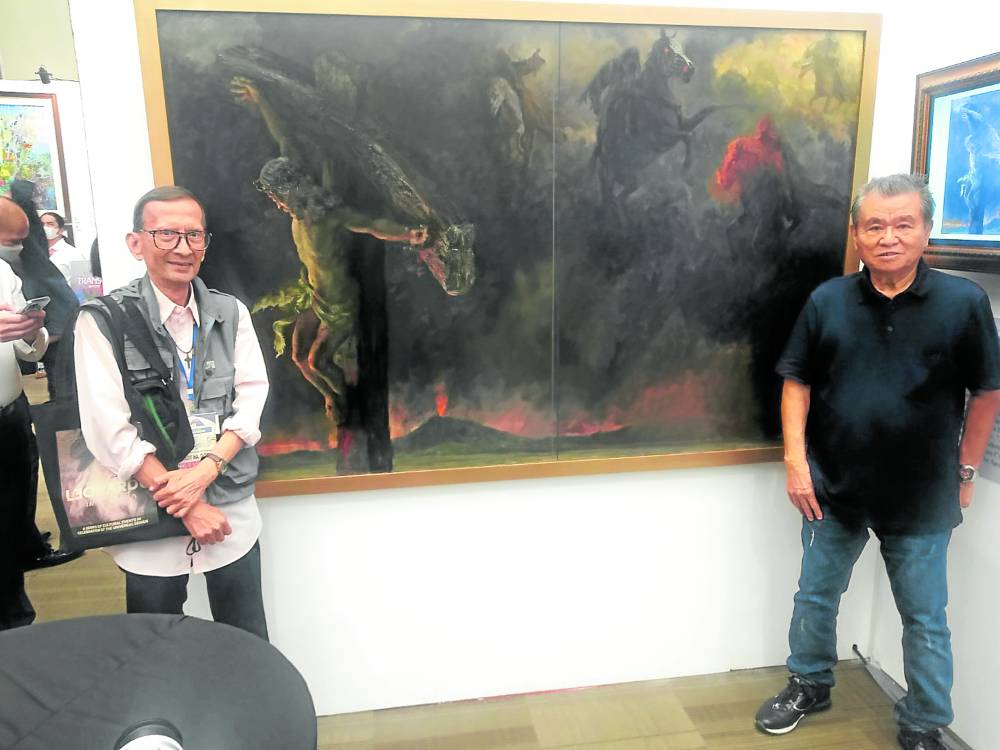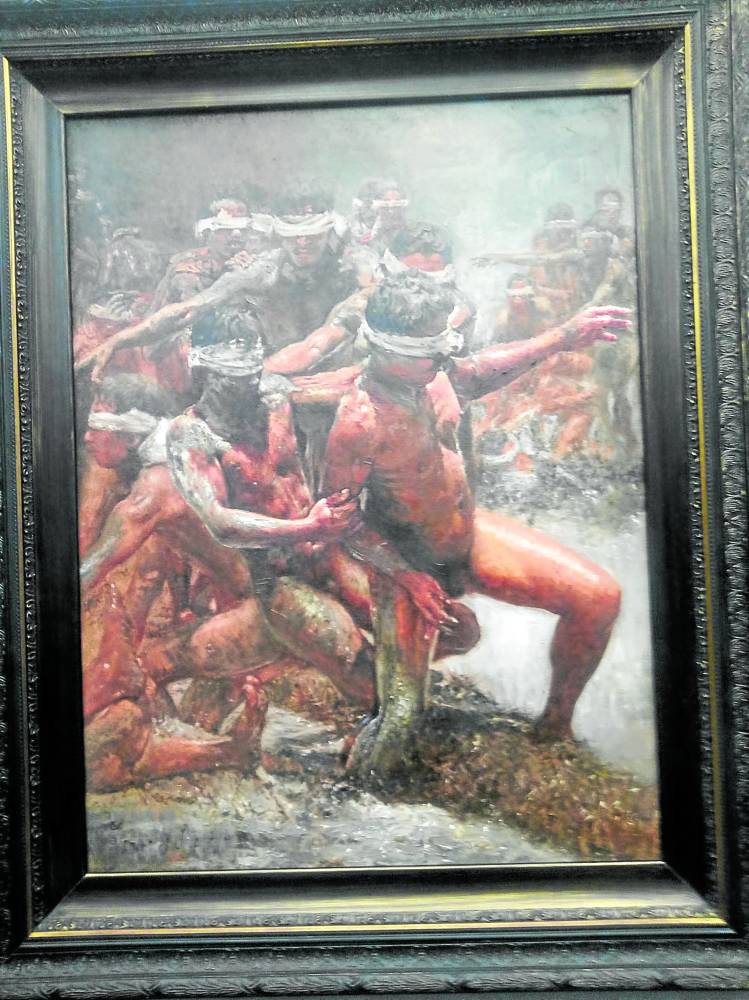
Now on its 14th year, the just-concluded ManilART fair, a project of the National Commission for Culture and the Arts (NCCA) in partnership with the Bonafide Art Galleries Association (Bago), saw digital art vying with traditional art for the attention of art lovers and collectors. The theme was “Forging Futures.”
The five-day art fair was formally declared open by Amy Loste of Gallery 9, Bago head, before a large crowd at the SMX Convention Center at SM Aura, Taguig City. Among the officials in attendance was NCCA executive director Ed Casaysay.
‘Phygital’
Twenty-four galleries participated in the event, which usually displays some 1,250 works of art. The booths and the artworks filled the huge hall of the convention center. There were paintings, mostly figurative but with a dash of abstract works; sculptures and mixed media works, traditional as well as experimental art with high technology, kinetic paintings and sculptures, digital art, moving objects, moving fauna, and doll-like figures with expressive eyes.
ManilART was going “phygital,” art fair officials said. This meant bridging the gap between digital and traditional space. Digital artworks are valued as extensions or digital prints of the physical or actual work of art. Thus, owning these phygital works enables the artist or collector to trade them virtually in art galleries and markets.
One of the highlights of the fair was “Joy United,” an art installation by German artists Juliana and Andrey, which explored and reflected the moods of fairgoers. Machine sensors “read” the emotions of guests, and ran them through the artists’ software codes. AI (artificial intelligence) then generated an artwork based on the feelings of the guests, which were seen and interpreted as vibrant lights and colors.

There were many emerging artists as well as established ones, including A-list glass sculptor Ramon Orlina (his daughter Anna Orlina also made her debut as a glass sculptor); Romulo Galicano, the master from Carcar, Cebu; Al Perez, known for his rendition of historical churches (although here he showcased his sculptures); and Araceli Dans.
Galicano unveiled his new major work, “Religion Versus Science,” showing the crucified Christ against a nightmarish scene of burning forests, frightened animals, and humanity in supplication. The painting is part of the artist’s series on climate change.
Armageddon
Orley Ypon unleashed a gaggle of classical nudes, female as well male, in scenes resembling chaos and biblical Armageddon. One of his paintings was called “The Blind leading the Blinds (sic).”
From Davao City came Maan Chua, who displayed an art design which can be worn. Danny Rayos del Sol, an artist and an NCCA committee head, showed intricate patterns from the North carved on carabao skulls, while from the South, Jun Impas paid tribute to the way of life of the indigenous Manobo.
Representing Iloilo was Rudy Yu, who showed urban scenes and landscapes. Raynante Concepcion Carandang, a hyperrealist from Batangas, focused on the social milieu. And in a workshop, mixed media artist Victor Dumaguing demonstrated and taught Lukis Sulam, a leaf-motif embroidery technique from the Sulu archipelago.“
ManilART maintains the future as its focus these next few years,” said Loste. “Artists and audiences are discovering new techniques, and setting trends through advancements in the digital age.”
For Rayos del Sol, “To support ManilART is to support the Filipino artist, the galleries, and to promote art in the country and to the whole word.” —CONTRIBUTED INQ












































